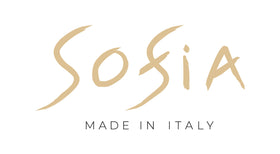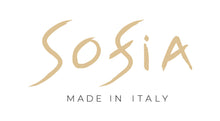Fashion in Italian Art and History: A Tapestry of Style and Influence
Italy, with its rich cultural heritage and illustrious history, has long been ainspiration of fashion and artistic innovation. From the magnificent frescoes of the Renaissance to the opulent costumes of the Baroque era, Italian art has played a pivotal role in shaping fashion trends and influencing sartorial aesthetics throughout history. The interplay between art and fashion in Italy has created a vibrant tapestry of style that continues to inspire designers and enthusiasts worldwide.
The Renaissance:
The Renaissance marked a golden age of creativity and artistic achievement in Italy, with fashion playing a central role in the cultural landscape. Renaissance paintings by masters such as Botticelli, Leonardo da Vinci, and Raphael offer a glimpse into the elaborate attire of the era, characterized by sumptuous fabrics, intricate embroidery, and opulent accessories. The iconic silhouette of the period, with its emphasis on voluminous sleeves, corseted bodices, and flowing skirts, continues to influence contemporary fashion.
Baroque Splendour:
The Baroque era brought a heightened sense of drama and extravagance to Italian art and fashion. Baroque paintings by artists like Caravaggio and Bernini depict figures adorned in sumptuous fabrics, embellished with elaborate lace, pearls, and jewels. Baroque fashion characterized by exaggerated proportions, rich textures, and lavish ornamentation, reflecting the opulence and grandeur of the period's art and architecture. The elaborate costumes of the Baroque era continue to inspire designers seeking to capture the spirit of luxury and excess.
Neoclassical Elegance:
In the late 18th and early 19th centuries, Italy experienced a revival of classical ideals and aesthetics known as the Neoclassical movement. Neoclassical art, epitomized by artists like Canova and Ingres, celebrated simplicity, symmetry, and purity of form. Neoclassical fashion echoed these principles, with women's attire characterized by flowing drapery, empire waists, and Grecian-inspired silhouettes. The clean lines and understated elegance of Neoclassical fashion continue to influence contemporary design, serving as a timeless source of inspiration.
The Birth of Haute Couture:
In the 20th century, Italy emerged as a powerhouse of fashion innovation, thanks in part to the rise of haute couture houses such as Gucci, Prada, and Valentino. Italian designers drew inspiration from the country's rich artistic heritage, infusing their creations with elements of Italian art and culture. From the sleek sophistication of Armani to the bold glamour of Versace, Italian fashion became synonymous with luxury, style, and quality. Italian designers continue to push the boundaries of fashion, drawing inspiration from art, history, and culture to create collections that are both timeless and contemporary.
Contemporary Influences:
In the digital age, Italian art and fashion continue to intersect in dynamic and innovative ways. Social media platforms like Instagram have become virtual galleries where designers and artists display their work and draw inspiration from each other. Contemporary Italian designers, such as Dolce & Gabbana and Moschino, incorporate elements of Italian art and history into their collections, paying homage to the country's rich cultural heritage while pushing the boundaries of creativity and expression.
In conclusion, the relationship between fashion and Italian art is a testament to the enduring influence of creativity, innovation, and cultural heritage. From the Renaissance to the present day, Italian art has served as a wellspring of inspiration for fashion designers, shaping trends and aesthetics that continue to captivate and inspire. As Italy continues to evolve as a global fashion hub, its rich artistic legacy remains a source of endless fascination and creativity.











